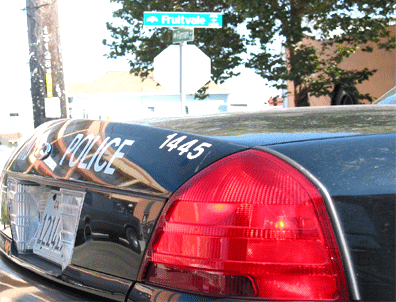
The proposed gang injunction in North Oakland is consistent with President Obama’s call to get smart on crime, as opposed to just tough on crime.
The injunction is based on what many North Oakland residents and merchants have been demanding. It is a narrowly tailored tool to disrupt a criminal enterprise responsible for murders and dozens of robberies, shootings and other major crimes in the neighborhood in recent years.
Like a restraining order against an abusive stalker, the injunction is a civil court order. Within a 100-block area, it will restrain a small group of adults who are deeply involved in dangerous activity. In no way does it endanger the civil liberties of anyone else in our community. To the contrary, it protects community residents from intimidation and violence.
Opponents have been arguing against an injunction that doesn’t exist — one that “criminalizes youth” and “profiles people of color.” One vocal opposition leader — a Santa Rosa resident — told The Chronicle that the injunction would make North Oakland a “concentration camp.” Not only is that offensive on many levels, it shows a serious disregard for facts.
Let’s differentiate between the myth and the reality of this injunction.
MYTH: It’s overly broad and will ensnare innocent people.
REALITY: The proposed order would initially apply to 15 adults (no minors will ever be included) based mainly on their convictions for armed robbery, carjacking, grand theft, drug sales and other felonies. With exceptions for things like work and emergencies, it would prevent them from hanging out together in public and from being on the street between 10 p.m. and 5 a.m.
When members of the gang are caught committing crimes (or when they are victims of violence by other criminals) they are often together, and it is often during late night hours. The injunction is designed to break up the criminal organization by making it harder for them to plan and commit crimes as a gang. It will not apply to anyone outside this group.
MYTH: It’s unconstitutional.
REALITY: California’s Supreme Court upheld injunctions as constitutional years ago. Constitutional safeguards — due process, court review, the right to appeal — are carefully protected. Importantly, anyone no longer associated with the gang can go through an “opt-out” process to be removed.
MYTH: Police can include anyone in the injunction for any reason.
REALITY: Any gang members added to the order will have the opportunity to argue their case in open court, and will be included only after approval from a judge based on extensive evidence of criminal/nuisance conduct. The burden of proof is always, as it should be, on the city. This conclusively precludes profiling.
This injunction will empower residents, help take back our streets and reduce the number of bullets fired wildly in our neighborhoods. It defends the community’s right to peace and safety, while safeguarding legal rights fundamental to our system of justice.
It is an opportunity to change a neighborhood and, perhaps, compel some gang members to change — and save — their own lives as well.
John Russo is the Oakland city attorney. Anthony Batts is the Oakland police chief.

